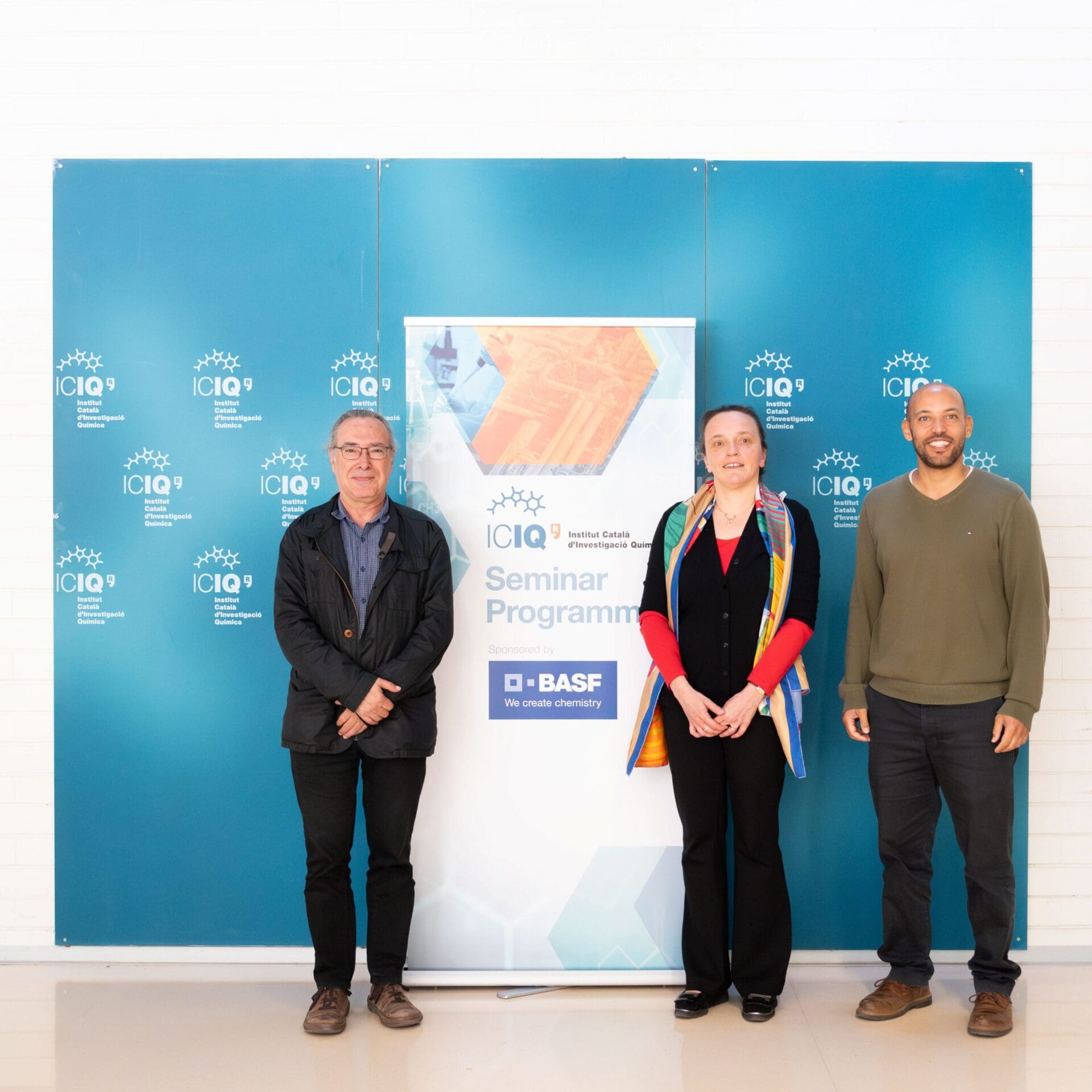
 19/04/2024
19/04/2024
 12:00 h
12:00 h
- Lecturer: Prof. Veronique Van Speybroeck
- University: Ghent University, Belgium
- Sponsored by:

New Frontiers in Modeling Complex Catalytic Cycles at Operating Conditions Bridging Length and Time Scales
Catalytic solids used in industrial applications show an intriguing high degree of complexity with phenomena taking place at a broad range of length and time scales. Additionally, the state and function of a catalyst critically depends on the operating conditions, such as temperature, moisture, presence of water, etc. Within this lecture, I will show how modeling starting from the atomistic scale can contribute to simulating complex catalytic cycles at operating conditions bridging length and time scales. 1
Historically, many molecular modeling efforts within catalysis were performed with static simulations at 0K, that did not properly account for operating conditions such as realistic temperatures, feedstocks. The last decennium, the field has evolved substantially and currently we are able to follow reactions on the fly using first principle Molecular Dynamics techniques. These techniques have shown to be very powerful and enable to discover new phenomena such as dynamic changes of active sites at operating conditions, the effect of water on reactions, etc. Very recently it was shown how such techniques even allow to simulate hindered diffusion of reactive species and products at operating conditions.
Despite these advances first principle Molecular Dynamics methods can not be regarded as standard methods to be used in a catalytic workflow and there exists still a length/time scale gap between what we can model and what can be measured in-situ and under operando conditions. One of the hurdles is the computational cost of calculating the interatomic forces with quantum mechanical accuracy. For simulating chemical reactions, it is mandatory to use quantum mechanical methods, as we need to describe dynamic formation and breakage of bonds. Currently Density Functional Theory (DFT) is the method of choice for calculating the interatomic forces. While DFT enabled a revolution in the field of catalysis and chemistry, we are now facing the limits of DFT in the attainable length/time scales. When using DFT, length and time scales are restricted to hundreds of picoseconds and a few nanometer even with the strongest High Performance Computers. These length and time scales are much smaller than realistic catalyst particle dimensions and time scales encountered in the catalysis process. 2
Currently with the rise of data drive methods a new era is opened, where potentially much longer length and time scales could be attained within the field of modeling catalytic processes, while still retaining quantum mechanical accuracy. To this end, one can construct Machine Learning Potentials (MLPs), where a numerical potential is derived from underlying quantum mechanical data, which could be used in subsequent MD simulations. These evolutions open a window of opportunity to bridge length and time scales for modeling complex catalytic cycles at operating conditions. Within this lecture, I will show the importance of molecular dynamics techniques to model heterogeneous catalyzed reactions at operating conditions and I will show first proof-of-concept results where machine learning potentials were developed for reactive events and diffusion in zeolite catalysis. 3,4
(1) Van Speybroeck, V.; Bocus, M.; Cnudde, P.; Vanduyfhuys, L. Operando Modeling of Zeolite-Catalyzed Reactions Using First-Principles Molecular Dynamics Simulations. ACS Catal 2023, 13, 11455-11493.
(2) Van Speybroeck, V. Challenges in modelling dynamic processes in realistic nanostructured materials at operating conditions. Philosophical Transactions of the Royal Society A: Mathematical, Physical and Engineering Sciences 2023, 381, 20220239.
(3) Bocus, M.; Goeminne, R.; Lamaire, A.; Cools-Ceuppens, M.; Verstraelen, T.; Van Speybroeck, V. Nuclear quantum effects on zeolite proton hopping kinetics explored with machine learning potentials and path integral molecular dynamics. Nat. Commun. 2023, 14, 1008.
(4) Cnudde, P.; Redekop, E. A.; Dai, W. L.; Porcaro, N. G.; Waroquier, M.; Bordiga, S.; Hunger, M.; Li, L. D.; Olsbye, U.; Van Speybroeck, V. Experimental and Theoretical Evidence for the Promotional Effect of Acid Sites on the Diffusion of Alkenes through Small-Pore Zeolites. Angew. Chem.-Int. Edit. 2021, 60, 10016-10022.
Other events

Let's create a brighter future
Join our team to work with renowned researchers, tackle groundbreaking
projects and contribute to meaningful scientific advancements



















